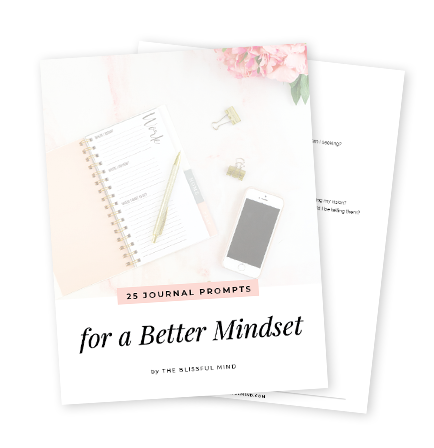Mindfulness for Overthinkers: Calming the Endless Loop of Thoughts Overthinking affects millions of people around the world by generating mental exhaustion and emotional pain through unending analysis, worry, and rumination. If you ever felt like your brain was a browser with a whole bunch of open tabs, you are experiencing the overwhelming reality of chronic overthinking. The bright side is that mindfulness has well-established techniques to disrupt this cycle and return your brain to a state of calm.

The Overthinking Mind
Overthinking is defined as endless loops of thinking that spiral out of control and stray too far from any productive problem-solving. One study published in the Journal of Abnormal Psychology found that overthinking—referenced as rumination—increased reported levels of anxiety and depression. The overthinking brain becomes “stuck” in what our colleagues in psychology would describe as a “cognitive loop”, an endless loop of thinking proliferated by thinking it.
Common indicators of overthinking are:
Counting every sentence, analyzing each conversation endlessly, replaying events to look for hidden meaning
Imagining the worst possible outcome in a scene, you can construct that advances into new stories; catastrophizing
Obsessively reviewing, revising, and rethinking decisions and beliefs, even though they may be small
Physical stress and tension from the thoughts of worry and anxiety
Scenes of scenes of “what if” scenarios that are left unresolved
These rewiring processes create a hypervigilant state in your thinking brain, thinking too much, and not relaxing or having a thinking mind that is clear. The biological base of overthinking exists in a triangular neurological network, which includes the default mode network (DMN) in the brain that operates over time, even in stages of rest.
The overthinking brain has a neural basis that connects to the default mode network (DMN), which is hyperactive when we are at rest. This network is the part of the brain responsible for self-referential thinking and, in fact, can get stuck in repetitive adaptive patterns, making it challenging to naturally achieve mental stillness.
Understanding the Science of Mindfulness and Mental Clarity
Mindfulness – which, simply put, refers to non-judgmental, present-moment attention – counteracts overthinking by shifting attention away from these internalized patterns of thinking to immediate sensory experience. Neuroscience studies using brain imaging technologies have shown that mindfulness meditation rewires the brain. Mindfulness practice creates changes in the structure and function of the brain in regions responsible for regulating attention while reducing activity in areas related to ruminative thought.
Dr. Judson Brewer’s research out of Yale examines how mindfulness meditation decreases activity in the posterior cingulate cortex, a major component of the DMN in the brain. Less activity in the DMN correlates with a decrease in self-referential thought and worry, reducing these overthinking patterns.
Significant potential neurological effects of mindfulness practice include:
An increase in gray matter density of the hippocampus, which supports learning and memory
Reduction in amygdala activation, associated with a fear response
Increased activation of the prefrontal cortex is associated with a positive emotional state
Increased neural connectivity between the attentional and awareness systems
Decreased DMN activity, which decreases rumination
Foundational Mindfulness Techniques for Overthinkers
5-4-3-2-1 Grounding Exercise
This effective grounding exercise encourages everyone to engage all five senses and disrupts overthinking patterns. Notice five things you can see, four things you can touch, three things you can hear, two things you can smell, and one thing you can taste. This technique quickly shifts attention away from internal thinking and back to the present reality, and it enhances the ability to disrupt negative thinking cycles.
Breath Awareness Practice
This is a simple but profound practice of breath awareness to ground attention in the now. Begin by observing your breath’s natural rhythm without changing it. When thoughts arise, acknowledge them with the phrase “thinking” or “planning” and re-focus on the breath. The practice cultivates an important skill in mindfulness, which is to simply notice thoughts without getting caught up in what they are thinking about.

Body Scan Meditation
Progressive body awareness encourages an overthinking mind to shift attention to physical sensations rather than cognitive narratives. Begin by focusing awareness on your little toe and move slowly through the body, noticing tension, comfort, temperature, or tingling sensations. This exercise grounds awareness into body sensations, but also brings awareness to how overthinking is manifesting in the body and fosters self-regulation to step out of overthinking mode.
Advanced Mindfulness Strategies
The RAIN Technique
RAIN provides a straightforward path to working with overwhelming thoughts:
Recognize what is happening in your mind with no judgment
Allow the experience without fighting it or trying to change it
Investigate gently how thoughts affect your body and feelings
Non-attachment, allowing a thought to pass without personally attaching to it
This all helps to change overthinking from an automatic reaction to the opportunity to respond consciously.
Mindful Labeling
When you find yourself on mental loops, practice labeling your mental activity: “worrying,” “planning,” “replaying,” “judging.” The simple action of labeling creates psychological distance between you and your thoughts, which reduces their emotional charge and maintains awareness of what your mind is doing. Studies have proven that when you label your emotions and/or thoughts, you activate the prefrontal cortex, which calms the stress response of the limbic system.
Present-moment Anchors
Create reliable anchors that allow you to quickly bring your attention back to the present moment. This could be feeling your feet on the ground, hearing the ambient sounds, or just focusing on the temperature of your hands. Having multiple anchors gives you flexibility based on the different contexts in which you typically engage in overthinking.
Establishing Daily Mindfulness Routines
When developing your mindfulness practice, the most important aspect is regularity over length of time. Start with just five minutes in the morning and slowly increase your time once you feel comfortable. Morning practice helps to start the day in a calm manner, while a short midday mindful pause helps to manage the effects of busy days before they start to accumulate.
Designing Your Practice Schedule
A daily routine that is most helpful involves several touch points throughout the day.
Morning Start-Up (5-10 minutes): Start with breath awareness or body scan meditation.
Midday Pause (2-3 minutes): Grounding during lunch break or transitioning.
Afternoon Check-Ins (1-3 minutes): Mindfully labelling during peak stress times.
Evening Reflection (10 minutes): Non-judgmentally review the day.
Bedtime unwinding (5 minutes): Progressive relaxation to settle thoughts on a busy mind.
Evening reflection allows for mindful processing of the day instead of anxious analysis. Spend 10 minutes non-judgmentally reviewing your experiences for the day with curiosity, and spend time observing the moments when mindfulness helped you manage unproductive overthinking.
Integrating Mindfulness into Daily Life






